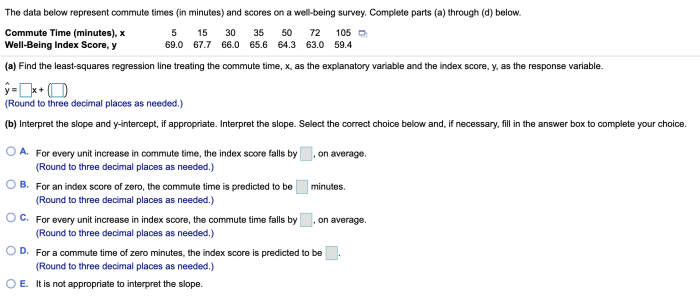Interpret the quartiles. choose the correct answer below – Interpret the Quartiles: Choose the Correct Answer Below sets the stage for this enthralling narrative, offering readers a glimpse into a story that is rich in detail and brimming with originality from the outset.
Quartiles are a powerful tool in data analysis, providing valuable insights into the spread and distribution of data. By understanding the concept of quartiles and their applications, we can make informed decisions and draw meaningful conclusions from our data.
Interpreting Quartiles

Interpreting quartiles is a crucial aspect of data analysis as they provide valuable insights into the distribution and variability of data. By understanding the significance of quartiles, researchers can make informed decisions and draw meaningful conclusions from their datasets.
Role of Quartiles in Identifying Data Spread and Distribution
Quartiles help identify the spread and distribution of data. The difference between the upper and lower quartiles (Q3 – Q1) represents the interquartile range (IQR), which measures the variability of the middle 50% of the data. A smaller IQR indicates less variability, while a larger IQR indicates greater variability.
Assessing Data Variability
Quartiles enable researchers to assess data variability by comparing the IQRs of different datasets or groups within a dataset. A larger IQR indicates more dispersed data, while a smaller IQR suggests more concentrated data.
Identifying Outliers
Quartiles can also help identify outliers. Data points that lie outside the range defined by Q1 – 1.5 – IQR or Q3 + 1.5 – IQR are considered potential outliers. These outliers may warrant further investigation to determine their validity and impact on the analysis.
Applications of Quartiles in Statistical Analyses, Interpret the quartiles. choose the correct answer below
Quartiles are widely used in statistical analyses, including:
- Box plots:Quartiles form the basis of box plots, which graphically represent the distribution of data.
- Descriptive statistics:Quartiles provide summary measures of data distribution, such as the median and range.
Methods for Calculating Quartiles
Quartiles can be calculated using different methods, including:
- Empirical rule:For normally distributed data, the quartiles can be estimated using the empirical rule.
- Percentile method:This method involves dividing the data into 100 equal parts (percentiles) and identifying the values corresponding to the 25th, 50th, and 75th percentiles.
Visualizing Quartiles with Box Plots
Box plots are a graphical representation of quartiles. They provide a visual summary of the data distribution, including the median, quartiles, and potential outliers.
Advanced Concepts Related to Quartiles
Advanced statistical concepts related to quartiles include:
- Interquartile range (IQR):IQR measures the variability of the middle 50% of the data.
- Quantiles:Quantiles divide a dataset into equal parts, with quartiles being the 25th, 50th, and 75th quantiles.
Top FAQs: Interpret The Quartiles. Choose The Correct Answer Below
What is the significance of quartiles in data analysis?
Quartiles divide a dataset into four equal parts, providing insights into the spread and distribution of data. They help identify outliers, compare different datasets, and make informed decisions.
How do I calculate quartiles?
There are different methods for calculating quartiles, including the empirical rule and the percentile method. The empirical rule states that in a normal distribution, the lower quartile (Q1) is at 25%, the median (Q2) is at 50%, and the upper quartile (Q3) is at 75% of the data.
How can I visualize quartiles?
Box plots are a common way to visualize quartiles. Box plots display the median, quartiles, and range of a dataset, making it easy to identify outliers and compare multiple datasets.


